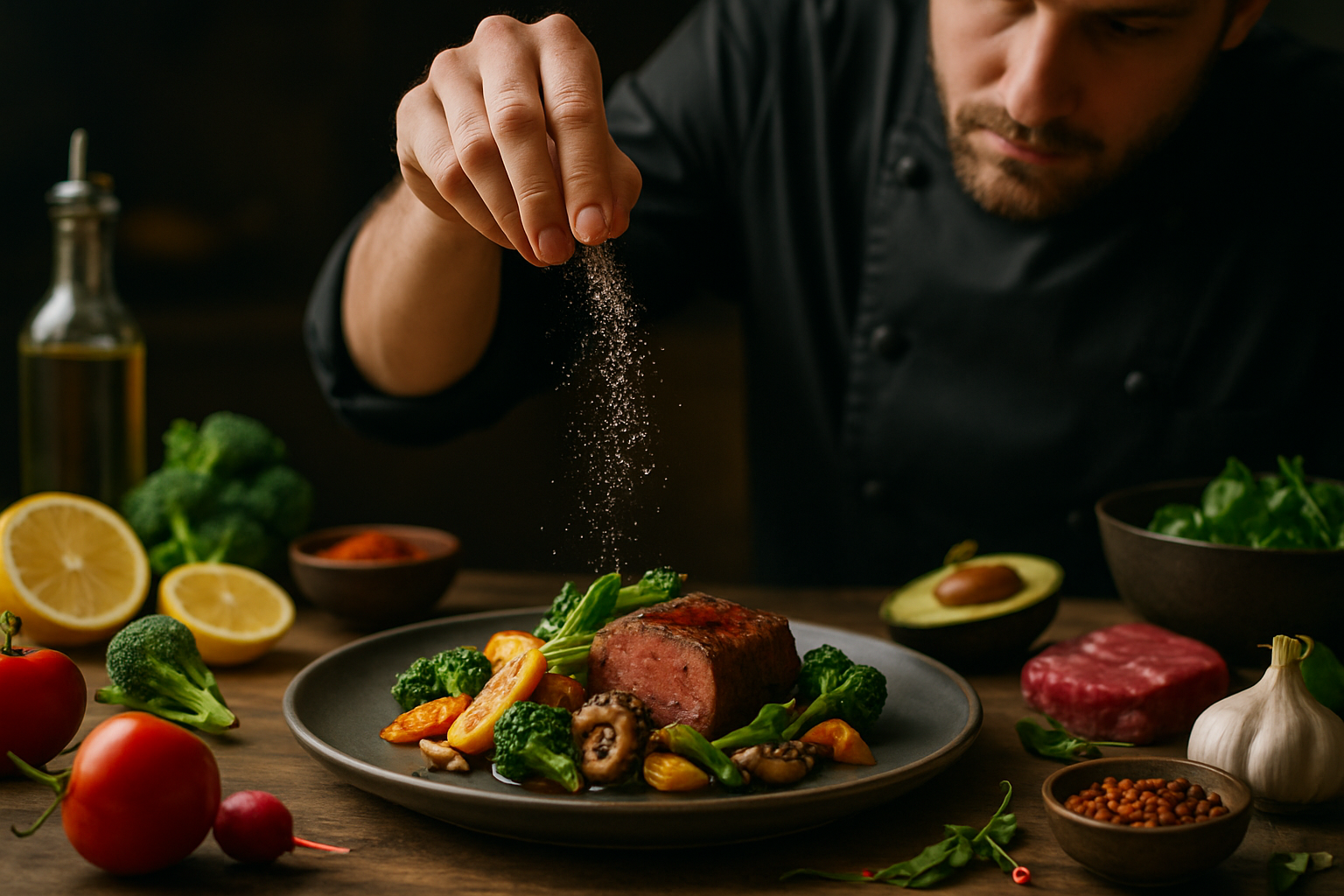Culinary Alchemy: Transforming Humble Ingredients into Gourmet Delights
Discover the art of elevating everyday ingredients into extraordinary dishes. This culinary journey explores innovative techniques and creative pairings that breathe new life into common pantry staples. From transforming canned beans into luxurious spreads to turning stale bread into decadent desserts, get ready to unleash your inner kitchen alchemist and impress with your gastronomic prowess.

Umami Bombs: Unlocking Savory Potential in Unexpected Places
Umami, often described as the fifth taste, is the key to creating depth and complexity in dishes. While traditionally associated with ingredients like mushrooms, aged cheeses, and cured meats, umami can be found and enhanced in surprising places. Take the humble tomato, for instance. By slowly roasting tomatoes with a drizzle of olive oil and a sprinkle of salt, you concentrate their natural glutamates, intensifying their umami flavor. These roasted tomatoes can then be blended into sauces, spread on sandwiches, or used as a topping for pizzas. Another unexpected umami powerhouse is nutritional yeast. This vegan-friendly ingredient adds a cheesy, nutty flavor to dishes and can be sprinkled on popcorn, stirred into soups, or used as a coating for roasted vegetables. Even everyday condiments like ketchup and Worcestershire sauce are rich in umami compounds. By incorporating these ingredients thoughtfully, you can transform simple dishes into complex, satisfying meals that leave diners wondering about your secret ingredient.
Texture Play: Elevating Dishes Through Contrast
The interplay of textures is often overlooked in home cooking but is a crucial element in creating memorable dishes. By incorporating contrasting textures, you can turn a one-note meal into a symphony of sensations. Start with a creamy base, like a silky soup or smooth puree, then add crunchy elements such as toasted nuts, crispy fried shallots, or homemade croutons. For salads, consider mixing tender greens with crunchy vegetables and adding a soft cheese or creamy dressing for balance. In desserts, pair smooth custards or mousses with crisp tuiles or caramelized sugar shards. Even simple dishes can benefit from textural contrast – try topping your morning oatmeal with a mix of crunchy seeds and chewy dried fruits. By consciously incorporating different textures, you create a more engaging eating experience that keeps diners interested from the first bite to the last.
The Art of Infusion: Imparting Flavor Without Overpowering
Infusion is a powerful technique for adding subtle yet distinctive flavors to dishes. This method allows you to impart complex tastes without overwhelming the main ingredients. Start with basic ingredients like oils, vinegars, or spirits, then add aromatics such as herbs, spices, or citrus zest. For cold infusions, combine ingredients in an airtight container and let them steep in the refrigerator for several days to a week. Hot infusions can be made more quickly by gently heating the base liquid with the aromatics, then straining once cooled. Experiment with unique combinations like rosemary-infused olive oil, lavender honey, or chili-infused vinegar. These infused ingredients can then be used to add a layer of sophistication to dressings, marinades, cocktails, or even baked goods. The key is to start with high-quality base ingredients and to taste frequently during the infusion process to achieve the desired flavor intensity.
Fermentation Frenzy: Harnessing Microbial Magic
Fermentation is an ancient preservation technique that not only extends the shelf life of ingredients but also creates complex, tangy flavors and beneficial probiotics. While traditionally associated with foods like sauerkraut and kimchi, the world of fermentation offers endless possibilities for culinary creativity. Start with simple projects like fermenting your own hot sauce using chili peppers, garlic, and salt. As you gain confidence, explore making your own sourdough starter for bread baking or experiment with fermenting fruits to create unique preserves. Even dairy products can be transformed through fermentation – try making your own yogurt or kefir at home. The key to successful fermentation is maintaining a clean environment, using the right amount of salt (when applicable), and monitoring the process closely. With practice, you’ll be able to create unique, probiotic-rich foods that add depth and interest to your meals while supporting gut health.
Culinary Alchemy Tips & Facts
• Browning butter before using it in baked goods adds a nutty, caramel-like flavor.
• Toasting spices before grinding them releases their essential oils, intensifying their flavor.
• Adding a pinch of salt to sweet dishes enhances their flavor and balances the sweetness.
• Incorporating a small amount of acid (like lemon juice or vinegar) can brighten the flavors of savory dishes.
• Using a mortar and pestle to crush herbs releases more of their aromatic oils than chopping.
• Resting meat after cooking allows the juices to redistribute, resulting in a more tender and flavorful dish.
• Blanching vegetables in salted water before sautéing or roasting enhances their color and texture.
Culinary alchemy is about more than just following recipes – it’s about understanding the science and art behind cooking. By mastering these techniques and principles, you can transform even the most humble ingredients into extraordinary culinary creations. Remember, the key to successful culinary experimentation is curiosity, patience, and a willingness to learn from both successes and failures. So, embrace your inner alchemist, stock your pantry with versatile ingredients, and start exploring the magical world of flavor transformation. Your taste buds – and your dinner guests – will thank you.





